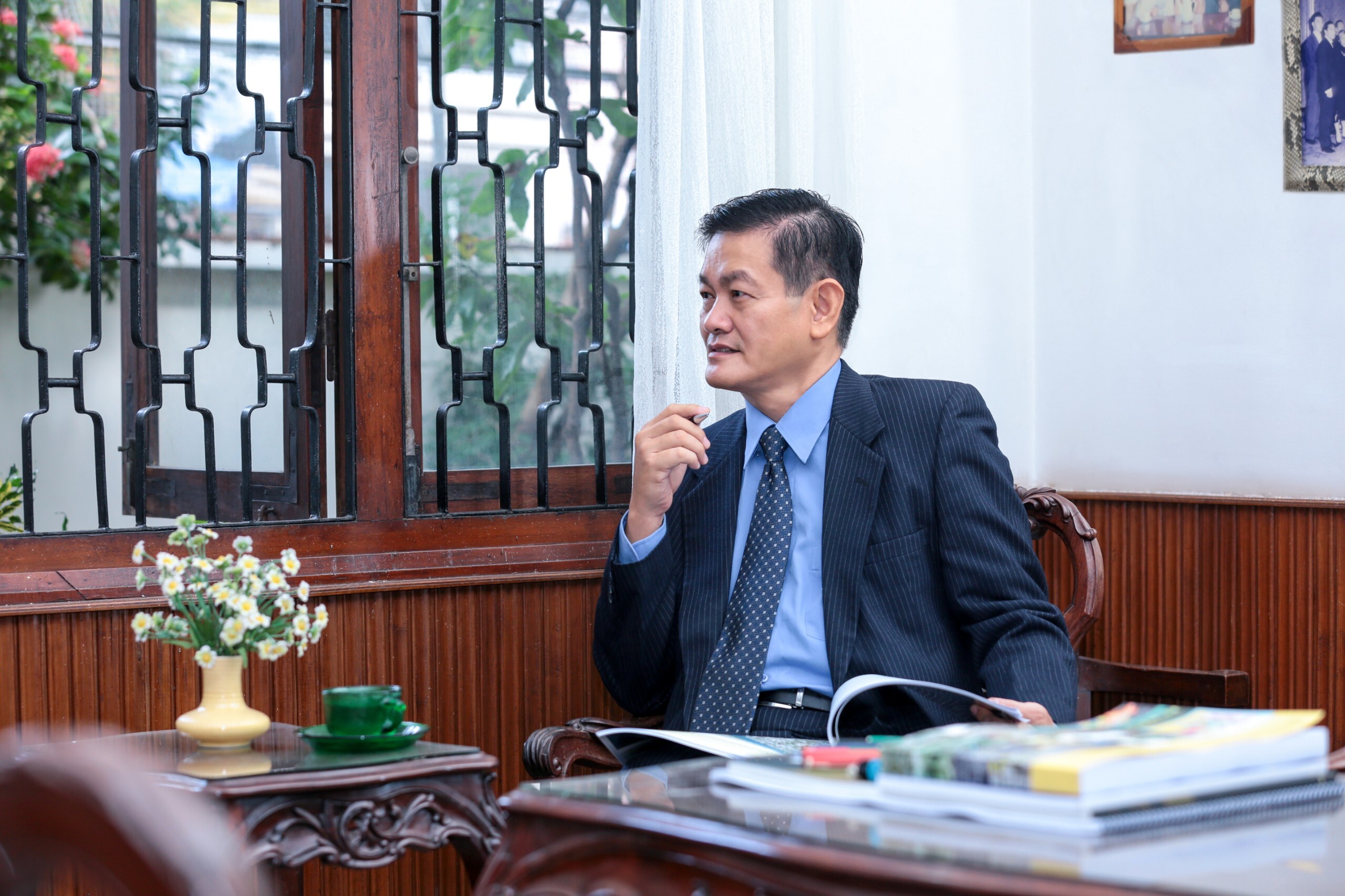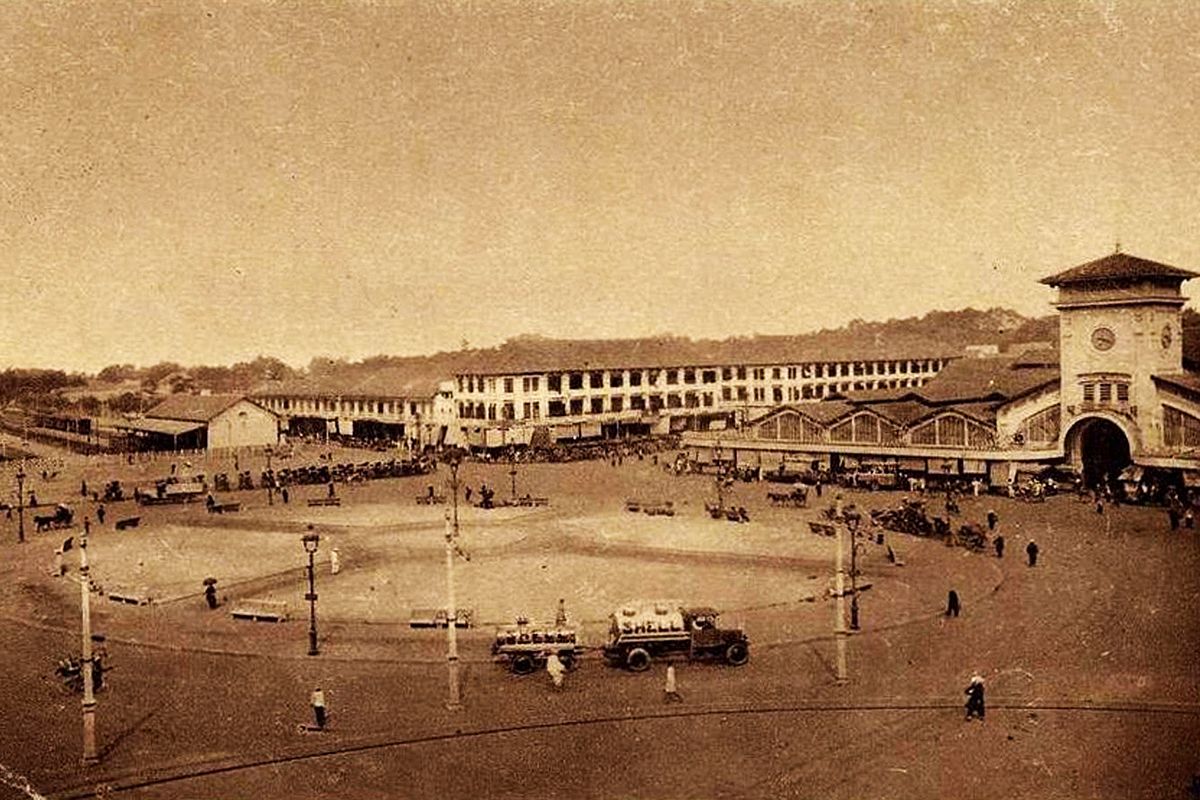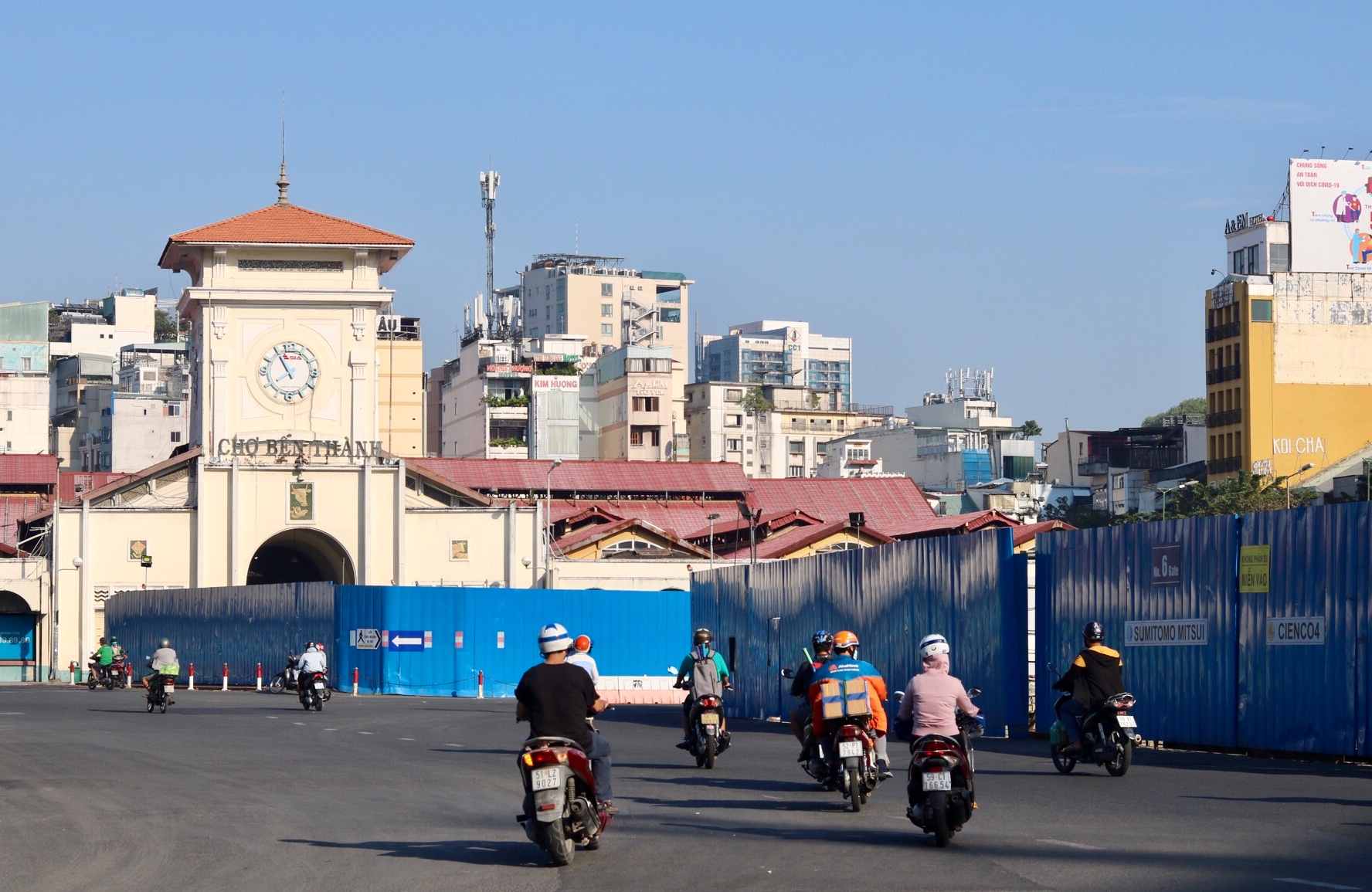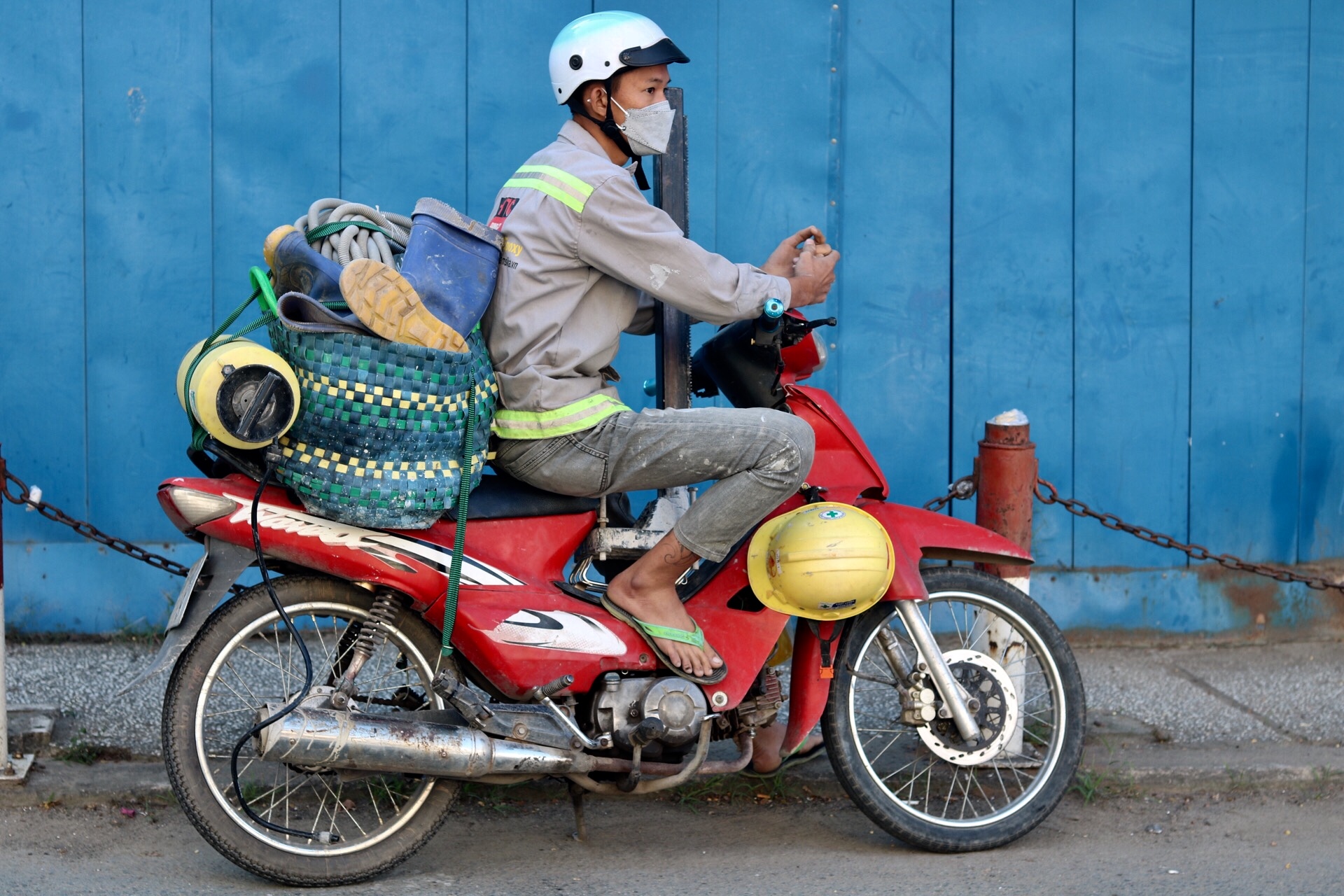Vietnam’s first metro rolled into operation on 6 November after a decade of delays and ballooning costs. A 23-minute journey from end to end, the country’s sole line is one of 10 routes planned for Vietnam’s bustling northern capital, Hanoi.
“I was excited the first time riding the Hanoi metro… Finally it’s done and we can ride it. It’s kind of a relief,” said Vuong Trang, a passenger in the capital city. “We were surprised to see it finally open. We thought maybe it would take a few more years.”
Poor planning, postponements, financial strain, land acquisition and rumours of corruption have mired metro construction in Vietnam’s two biggest cities. But those aren’t the only issues. Longtime urban planner Ngo Viet Nam Son said not enough focus has been placed on parking structures, bus routes connected to stations and development along metro lines.

“Hanoi is the first finished project and even the Hanoi example is not really a good example to duplicate elsewhere,” he said. “[There is] a lack of urban planning and development. They forgot that doing the metro line is just one part of the metro project.”
Roughly 1,500 kilometres south of Hanoi, sheets of blue corrugated metal surround a construction site across from one of Saigon’s oldest landmarks, Ben Thanh Market. Like its northern counterpart, the Ho Chi Minh City metro is over 10 years in the making but has yet to carry a passenger.
“I’m living my life watching and waiting for it to be done. It feels like forever,” said Tran Thao, who hoped to take the train to Thu Duc District when she started university in 2012. While Thao has long since graduated, the metro is still under construction.
“I was really excited when they started to build that thing. I hoped I could take it to my university,” she said. “I have waited for nearly ten years.”


Plans for subways in Hanoi and Ho Chi Minh City go back roughly two decades.
Work began in 2011 on Hanoi’s now-operational Cat Linh Line. Built by China Railway Sixth Group, the line was scheduled to begin service in 2016 and cost $550 million. The final cost surged to $868 million with 77% of funding met by loans.
Early plans for a Ho Chi Minh City metro were proposed in 2001 as part of a public transport network. After scrapping initial proposals, the city began work on the current network in 2012 with a first line stretching from District 1 to District 9 primarily funded by the Japan International Cooperation Agency.
In late 2018, Japanese ambassador Umedo Kunio said unpaid bills to a Japanese contractor, Sumitomo Corporation, had reached $100 million and work would stop without payment. Ho Chi Minh City paid the tab the following year but continued to encounter funding dilemmas, requesting $1.67 million from the central government for Management Authority for Urban Railways staff, who had received only partial pay.
The People’s Committee of Ho Chi Minh City revised the Line 1 cost in 2019 from $749 million to $2.02 billion.
Before the most recent delay, the city’s first line was slated to open in 2022. Citing difficulties arising from the Covid-19 pandemic, the opening date was pushed an additional year or two.
Tim Doling, author of The Railways and Tramways of Viet Nam and a longtime Ho Chi Minh City resident, said announcements for the line’s opening have been “as clear as mud.”
“They seem to be preparing everyone for the possibility that it may not be open until 2023 or even 2024,” Doling said. “It was estimated that the line would be completed by June 2014 and put into use after testing in January 2015. But here we are in 2021 and there’s still no definite opening date.”
From Nam Son’s perspective, Vietnam’s inexperience in large infrastructure projects has led to the halting metro progress. He divided the primary limitations into four categories: funding, legal support, experience and preparation.
With each urban rail line costing approximately $1 billion, Vietnam must rely on official development assistance from overseas, or ODA, to put plans in motion. The monetary assistance has come from multiple countries, each adding a bevy of complex paperwork to the development timeline, Nam Son explained.
Reliance on overseas funding further complicates the process by requiring Vietnam’s laws to align with international regulations. Lengthy and sometimes heated discussions internally and between lender and lendee increase the waiting game.
An overarching issue at the root of delays is the country’s lack of experience in urban transportation systems.
In Nam Son’s construction work in China, the US and Canada, he saw planning time double that of Vietnam, but construction ran smoothly with more preparation. In Vietnam, shortcuts are made before the project has been thoroughly laid out and, in some cases, construction has begun before sites are prepared, he said.

“Because of inexperience, at first we set the price very low and then when they do the technical drawing and technical documents, of course, it is more difficult,” he said. “The price in the contract and real price when they finished the project is much, much different. It’s five or ten times [more than] the original price.”
“When they start construction, in many cases, the site is not clear yet,” Nam Son added. “People still live there.”
While still eager for the metro opening, Thao in District 12 said she is dubious of its quality and fears corruption may hinder safety.
“I am still excited to try that thing but kind of worried about the safety. You know since it’s been so long, I don’t know if the base is still good or not,” she said, adding that she does not trust the government’s use of project funds. “I don’t think they spent all of that money on the metro. People are greedy. They might burn some money for their own convenience.”
The opening of Vietnam’s first metro line has been met with elation as netizens post selfies and passing scenes of Hanoi’s placid Dong Da Lake from carriage windows.
Yet Nam Son worries the lack of a holistic metro project could hinder its usability. The government must prioritise transit-oriented development around metro lines to surpass the ease of navigating Vietnam’s cities by motorbike, he said.
“They have to urgently develop the connecting bus, develop their parking and develop around the metro line,” he said. “Without that, I really doubt that it will help.”

Trang in Hanoi echoed Nam Son’s concerns. Although happy to experience the novelty of the train, she doesn’t see how the current line will be useful in everyday life.
“One of my friends just took the train yesterday to go to work. She was happy with her new experience but it was not so convenient for her,” she said. “I don’t think she considers the train as an option. [It’s the] same for me.”
Nam Son also does not foresee metro line openings solving the country’s metro-related money troubles. The government may need to shoulder the cost of operation while trying to keep fares low amid uncertainty over the public’s willingness to use the service.
Although he said metros are indispensable for growing cities like Ho Chi Minh City and Hanoi, he believes successful line operation and metro industry development are essential considerations before haphazardly rushing forward.
Building has already begun on Ho Chi Minh City’s Lines 2 and 3, which Nam Son opposes without first knowing the opening dates and probability of success on Line 1. Carriages must regularly reach 70% to 80% capacity to ensure Vietnam can pay its debts and not add another economic burden.
Moreover, with railway technology coming from multiple countries, Nam Son worries what will happen when a metro line encounters an operational issue without a national standard in place.

“We need to build a national standard for metro lines across Vietnam,” he said. “We cannot afford 10 metro lines in one city and 10 different technical systems because later in operation we may have a big, big problem.”
It’s not all doom and gloom when it comes to the metro. Many are optimistic, even excited, about the speed and ease promised by the mass transport systems Vietnam hopes will rise from the jumble of partial or incomplete construction in its centerpiece cities.
Linh Chi works at a Hanoi marketing firm where a colleague uses the metro daily. Chi vividly remembers driving past a heap of rubble in her high school days and dreaming about riding a subway in her home city. Today, she is happy to see it open.
“I was driving with my parents and then I saw piles of concrete rising in the middle of the street. I asked questions and they were like, ‘Oh, it is the metro,’” she said. “I didn’t know it would take 10 years, but here we are.”


